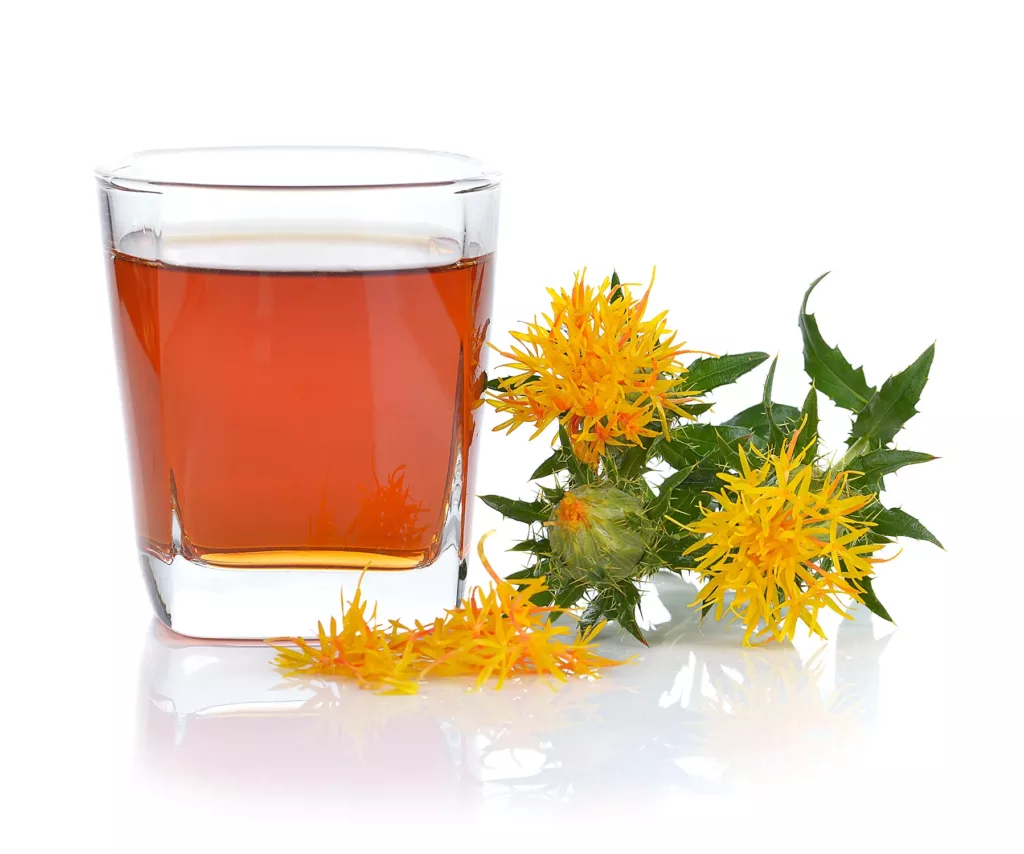
What is Safflower Used For?
Safflower, scientifically known as Carthamus tinctorius, is a highly versatile plant with a rich history of use in various cultures worldwide. Traditionally, it has been cultivated for its seeds, which yield safflower oil, a popular cooking oil known for its health benefits. Beyond its culinary uses, Safflower has found a place in traditional medicine, where it is valued for its potential to treat various conditions. It has been used to improve blood circulation, reduce inflammation, and even remedy heart conditions and cholesterol management. Additionally, safflower petals are used as a coloring agent in the food industry and have been utilized in natural dyes for textiles. In some traditional practices, Safflower is also believed to support menstrual health and alleviate symptoms of PMS.
Is Safflower Good or Bad for You?
Thanks to its nutritional profile and beneficial compounds, Safflower is generally considered good for health. Safflower oil, for instance, is rich in unsaturated fats, particularly omega-6 fatty acids, which can support heart health by lowering LDL (bad) cholesterol levels when used instead of saturated fats. The oil is also a source of vitamin E, an antioxidant that helps protect the body from oxidative stress and inflammation. However, like any dietary fat, moderation is key, as excessive omega-6 fatty acids can contribute to inflammation if not balanced with omega-3 fatty acids. For most people, incorporating Safflower into a balanced diet can offer health benefits, but it’s essential to consider individual health conditions and dietary needs.
Is Safflower and Saffron the Same?
Safflower and saffron are not the same, although they are sometimes confused due to their similar names and use as coloring agents. Saffron comes from the crocus flower (Crocus sativus) and is prized for its distinctive flavor, aroma, and deep reddish-orange color. It’s one of the world’s most expensive spices, used in culinary dishes for its unique taste and color. On the other hand, Safflower is primarily grown for its seeds and oil, and while its petals can impart a yellow to orange hue, it does not possess the same culinary value or intense flavor profile as saffron. The confusion is often compounded by the historical use of Safflower as a cheaper alternative to saffron for coloring purposes.
Is the Safflower Edible?
Yes, the safflower plant is edible, though it’s most commonly consumed in the form of safflower oil extracted from its seeds. The oil is used in cooking and salad dressings is appreciated for its neutral flavor and high smoke point. Beyond the oil, safflower petals have been used in traditional cuisines to add color and mild flavoring to dishes. While the petals are edible, they are not as commonly used in modern cooking as other parts of the plant. Aside from oil production, the seeds can be eaten as a nutty snack or used as an ingredient in various dishes. However, as with any plant, it’s important to ensure that it is prepared properly to avoid any potential adverse effects.
Safflower Tea: A Herbal Brew with Benefits

Safflower tea, derived from the petals of the Carthamus tinctorius plant, is an herbal infusion that offers a unique flavor and boasts various health benefits. With its mild and slightly earthy taste, this tea has been enjoyed for centuries in different cultures for its medicinal properties and culinary uses.
Origins and Composition
Safflowers have been cultivated since ancient times, originally valued for their seeds and the oil extracted from them. However, the plant’s bright yellow and orange flowers also hold significant value. Rich in compounds like flavonoids and antioxidants, safflower petals are used to create a soothing, caffeine-free tea.
Health Benefits
- Heart Health: Safflower tea is known for its potential to improve heart health. It may help lower bad LDL cholesterol levels while ensuring the cardiovascular system functions smoothly.
- Anti-inflammatory Properties: The anti-inflammatory properties of safflower tea can aid in reducing swelling and pain, making it a potential remedy for conditions like arthritis and menstrual pain.
- Immune Support: Rich in antioxidants, safflower tea supports the immune system, helping the body fight off free radicals and reduce oxidative stress.
- Digestive Health: This herbal tea can also play a role in improving digestion and can be used to alleviate symptoms of constipation and bloating.
- Skin Health: Consuming safflower tea might contribute to healthier skin by promoting hydration and elasticity, thanks to its antioxidant content.
Culinary Uses
While most commonly consumed as a tea, safflower petals can also be used as a natural dye in cooking, offering a cheaper alternative to saffron for imparting a yellowish hue to dishes. The flavor is subtle, making it a versatile ingredient in the culinary world.
Preparing Safflower Tea
To brew safflower tea, steep dried safflower petals in hot water for 5 to 10 minutes, depending on the desired strength. The tea has a unique, slightly peppery taste and can be enjoyed alone or sweetened with honey. It can also be blended with other herbs to create different flavor profiles.
Considerations
While safflower tea is generally safe for most people, consuming it in moderation is essential. Pregnant women and individuals on certain medications should consult with a healthcare provider before adding safflower tea to their diet due to potential interactions and effects.
Conclusion
Safflower tea is a delightful and healthful addition to any tea collection. With its subtle taste and numerous health benefits, it’s a beverage that soothes the body and supports overall well-being. Whether you’re looking for a heart-healthy option, seeking to reduce inflammation, or simply exploring herbal teas, safflower tea is worth considering.


